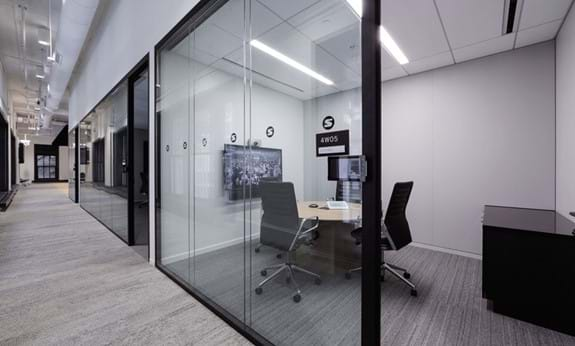The new shape of office collaboration

What will office collaboration look for the rest of this year and beyond? Certainly, it will be different to what it was at the start of 2020. For those returning to the workplace, there’s understandably a feeling of anxiety about how safe it is in terms of office hygiene and social distancing. Many employees will continue working from home, so there will be fewer people sharing rooms.
Alongside enabling videoconferencing solutions keeping remote and office-based workers connected and working together, the office space in which meetings are held will change.
How will these changes manifest themselves? According to Kevin Smith, UCANZ Director for Integrated Systems at Shure, “The discussions we’re currently having with clients are centering around increasing the estate of small rooms for one or two people to utilize, downsizing space so larger meeting rooms host smaller groups, and encouraging people to use their own devices to minimize shared touchpoints.”
Enabling social distancing
As enterprises focus on creating safe and effective spaces, offices are being rearchitected to enable social distancing. It’s becoming clear that banks of standalone desks across open floors will become a much less common sight.
We have identified two specific trends in office space and collaboration:
- Smaller rooms: Expect to see smaller meeting and collaboration spaces – and more of them – as previously large office space is converted. These small rooms may be designed to accommodate just one participant connecting with remote colleagues and clients, rather than whole teams. Huddle rooms too may become single-user rooms. As these smaller rooms will be used more frequently and for a variety of tasks, including client-facing meetings, the need for good quality AV and collaboration tools will become a priority.
- Dispersed workplaces: In a bid to manage the return to the workplace, some organizations are decentralizing and dispersing their workforce. This may involve reducing the pressure on busy offices by moving front office staff to alternative locations, such as satellite offices. Dispersing people within a single workplace can also be expected, for example with meeting rooms being reconfigured for fewer participants.
Changing investment priorities
At Shure, we anticipate these changes in office space to have an impact on IT and AV spending. More elements of the business will require high-quality solutions that enable teams to keep in contact, wherever they are located. This will see conference room upgrades that may have been lower down the agenda at the start of the year now being seen as crucial. It’s about ensuring people have the space to communicate safely and effectively across the business.
Here’s where we anticipate some of the budget being spent:
- In both corporate and education, the expectation is that more smaller rooms will need to be outfitted with AV equipment to aid communication and collaboration. In addition, huddle-type spaces that are very common in the corporate environment are likely to become single-person rooms, and may well be upgraded to cater for their expected increase in use. In turn, larger rooms will need to be adapted to comfortably accommodate fewer people.
- Many of the dispersed offices will be in locations that are not equipped to the same standard as the main HQ. To avoid frustration and even resentment, investment in audio solutions that make it appear as if meeting participants are in a single event, whether connecting from outside the HQ or in a new satellite office, will be a key requirement.
- Minimal touch audio equipment will be on the AV shopping list. We cover this in more detail in our blog ‘Will the future be touchless?’, but it’s important to include it in this discussion on investment priorities. We expect to see an uptake in solutions incorporating advanced technology, such as Shure’s remote device management software, and array microphones that can be installed on ceilings and walls that are out of reach of meeting participants.
Flawless conference room audio – from anywhere
Whether working in a new satellite office, a small room in the main building, or from home, employees need to be able to connect effortlessly with their colleagues and business partners. Flawless audio quality and consistent speech intelligibility is essential. In a survey of 400 professionals in the US (before the COVID-19 lockdown) 82% had experienced a negative impact of poor audio quality, such as rescheduled calls and damage to their brand. And they don’t like it, with 96% saying they were frustrated with their virtual meetings.
It’s no surprise therefore, that we expect new-look office meeting spaces to feature superior virtual collaboration solutions. Reliable technology that captures every nuance, from every workspace will enable distributed teams to keep collaborating, from anywhere.

Related Posts
It’s time to redefine the workplace
As the future of work continues to evolve, and the importance of communication and collaboration increases, reconfiguring collaboration spaces to build the right employee experience is now critical. IDC believes that investments to enhance hybrid meetings through audio quality can lead to tangible business outcomes.
IDC Video : Audio Issues with Hybrid Working Models
IDC Explores how quality audio can overcome the issues and consequences associated with hybrid working.